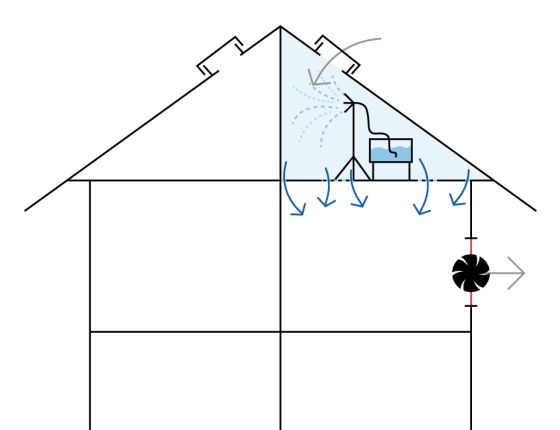Overview
ComEd's Customer Innovation program seeks to invest in concepts and projects that explore or demonstrate new ways to make energy efficiency, demand response, distributed energy resources, and other cutting-edge demand-side management opportunities more accessible, affordable, and effective for everyone.
It is often challenging to obtain significant envelope air leakage reductions from sealing multifamily units. CEE’s research team will use a new AeroBarrier exterior envelope sealing method to seal apartment unit air leaks through the attic. A sealant fog is released in the attic while a blower door fan exhausts air from the unit. This pulls the sealant fog from the attic through air leaks to the unit and seals those leaks. Early demonstrations reduced apartment unit leakage by 30% to 55%. Unlike previous methods, the sealing can be conducted in occupied units without having to cover furniture and finished surfaces.
Project Summary
Objective
- Measure air leakage reductions for this new method for multiple building types.
- Obtain contractor feedback on opportunities and barriers for this method.
- Provide recommendations for sealing equipment and protocols.
Scope
- Seal apartment unit-to-attic air leaks for up to 20 units across three to five multifamily buildings.
- Survey and interview occupants, building managers, and contractors to assess market potential and process improvements.
- Measure the reduction of apartment unit-to-attic air leakage and energy savings.
Non-energy benefits
- Sealing air leaks will reduce drafts to improve occupant comfort.
- The sealing will inhibit warm, moist air from entering the attic during the winter, which will reduce potential moisture durability and ice dam concerns.
